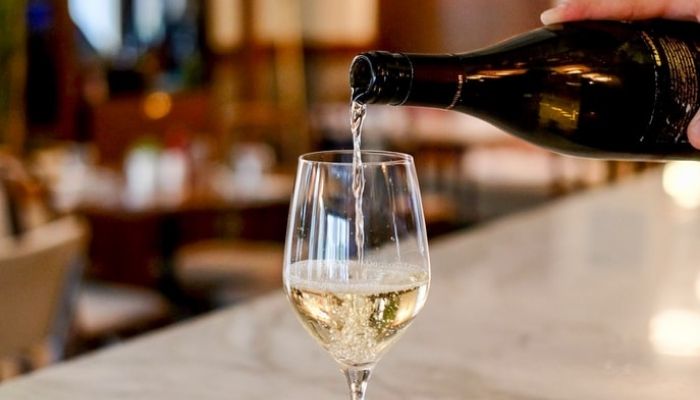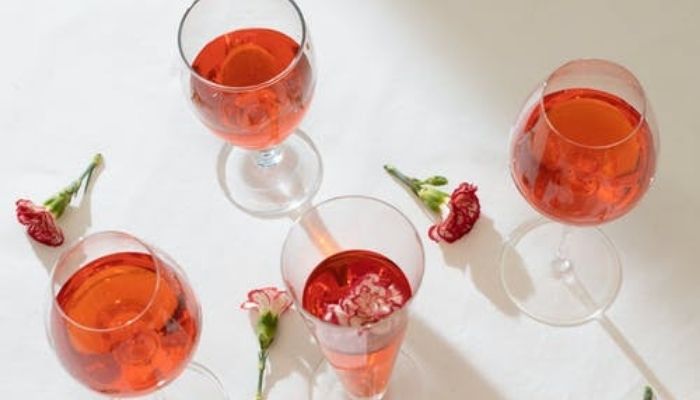Super Early Bird Deadline
October 31, 2025
Judging
Date
May 18, 2026
Winners
Announced
June 10, 2026

How can wine brands support restaurants as they recover from the devastating effects of the pandemic? Craft your wines with consumers in mind by researching demographics and consumer trends and anticipating what consumers will want in 6 months, one year, even 3 years. Know your customer, and know their customers better than they do. Considering the reciprocal roles that wine brands and restaurants play in the hospitality economy, the answer is to serve restaurants as never before. Fill in the gaps left by the lack of front-of-house staff by creating a beverage program that is tailor-made for a skeleton staff that provides confidence to each server and enables the staff to increase beverage sales easily. In other words: do their job for them.
Few industries have been hit harder and for longer than restaurants. Even as pandemic restrictions are relaxing, restaurants continue to struggle. Tourism has climbed up slightly from an all-time low in 2020, but according to Global Travel Industry News tourism won’t recover to pre-pandemic levels until 2024. Business and personal travel are showing signs of recovery as more and more people get vaccinated. Domestic travel and staycations are the first sectors showing real improvement because they allow for socially distant travel.
Exploring one’s own backyard or setting off for a road trip to nearby locales are hot trends in 2021 that will extend to 2022. Airlines are showing an uptick of brave people willing to jet a bit farther, whether it is for business or for pleasure. These travelers are reseeding the hungry hospitality economy. Reuters reports that more than 110,000 restaurants and bars permanently shuttered during the pandemic and more than 2.5 million people lost their jobs. Additionally, Sonoma State University recently released a study detailing Covid’s impact on the California wine industry showing pandemic losses upwards of $5.9 billion. Wine brands experienced declines in direct-to-consumer sales along with tasting rooms, wine clubs, and on-premise sales. Off-premise / online wine sales are the only sectors that showed consistent sales. Nevertheless, wine sales are down 18% over pre-pandemic numbers.

Restaurant owners report that their greatest obstacle to recovery is their inability to hire staff. Reluctant to return to a system of low and volatile wages after more than a year on consistent government assistance, accompanied by government-funded medical benefits, restaurant workers have taken the time to assess their lives and many have decided that toiling in a busy and often thankless business while dealing with unpleasant and sometimes unruly guests, is simply no longer the lifestyle they wish to pursue. While some consumers may be reluctant to dine out, many people are ready to go out and commune with friends and family. They crave social interactions and miss being served.
Now that vaccine passports are required to enter many restaurants and public venues across the nation, even the most reluctant are venturing out. Unfortunately, with 40% of the United States population yet unvaccinated and no longer welcome, the restaurant market pool has decreased significantly. Recent estimates show that restaurants may not fully recover until mid-2022. Restaurants need all the help they can get. What can wine brands do? They can over-deliver in product quality, presentation, training, and consumer engagement.

Suppliers and distributors receive ample training on winery assets and their current wine releases, but rarely have time to extend that training to restaurant sommeliers, servers, bartenders, and beverage buyers. Wine brands must work directly with on-premise vendors in mind to develop a robust and competitive by-the-glass program that can be implemented with ease by the entire restaurant floor staff from the host and servers to the managers. In our national three-tiered system, the front-line sales staff is often overlooked. So often, wine brand training is reserved for wine directors, wine sommeliers, and service captains.
It is rare that hostesses, kitchen staff, and second-tier service people have access to wine training, and are left unable to answer questions from wine curious customers. Every person on the staff benefits from wine training because every person on the staff may be called upon to answer wine questions for guests; particularly when restaurant workers are doing double duty covering for missing staff.
Begin working with restaurant wine buyers in early October to develop their holiday wine lists and promotions. Review their menus and know their seasonal trends. Pitching your wines to pair with specific dishes is the key to success. By expertly pairing your wines to specific dishes, you provide the servers with choices they may never have thought of. Tired and overworked servers tend to recommend the same wines over and over again because they have first-hand knowledge of them and don’t have to think about it. They may not have any idea what the wine and food pairing tastes like, and they may not have the time to explore on their own. Do their work for them.

Engaging early in October allows the restaurateurs and sommeliers ample time to properly train their staff on every detail of the wines and how they best match their menu items. It gives them time to develop promotional programs to incentivize their entire staff to focus on certain wine brands.
What does thorough and inclusive product training look like?
In the last eighteen months, the wine industry learned just how effective Zoom webinars can be. With winery, supplier, and distributor representative travel budgets limited, implementing webinars is the way to go. Additionally, webinars can be recorded for replay. By creating an engaging video or live webinar training tools, an entire staff can attend training, whether live or on their own time by watching the replay. Every state has different laws, but most allow for wine training tastings. Sample bottles can be distributed to beverage directors and parceled out amongst staff. Opting for micro packaging such as one-ounce glass bottles control waste and consumption as exact numbers can be sent to each restaurant in training.
Offer sales incentives to the front line servers as an exciting means to increase by-the-glass sales. Incentives can be as simple as contests with small but worthy prizes and as large as sponsored wine training through the WSET or CMS-A organizations who often subsidize their respective introductory courses for prospective wine students.
By directly engaging with on-premise beverage directors and their sales staff, and enhancing the reciprocity between the adjacent wine and restaurant businesses, wine brands can truly support restaurants as they weather the Delta wave and the holiday season with ease. By doing their job for them, the restaurants, their staff, and their customers aren’t likely to forget your brand.
Article Written by: Simone FM Spinner, Wine Expert.
Enter your Wines now and get in front of top Sommeliers, Wine Directors, and On-Premise Wine Buyers of USA.
